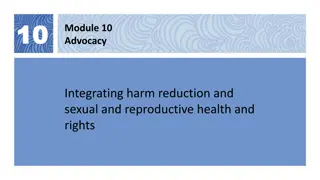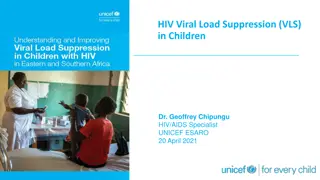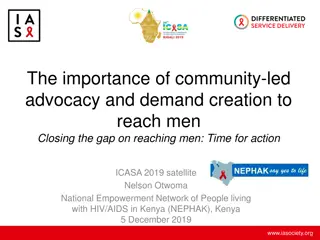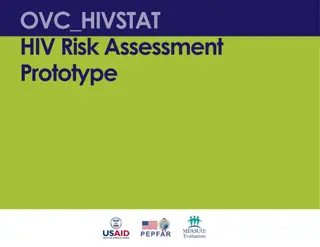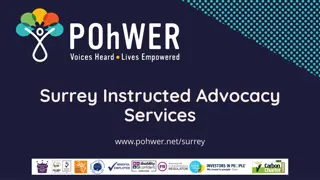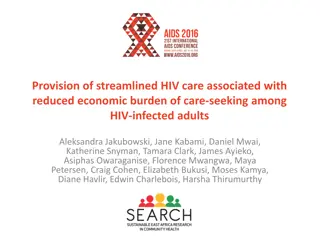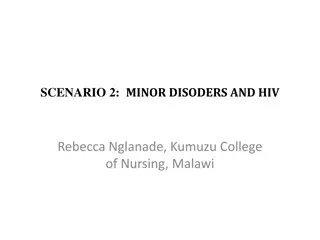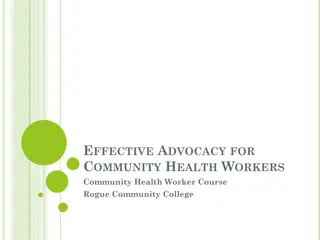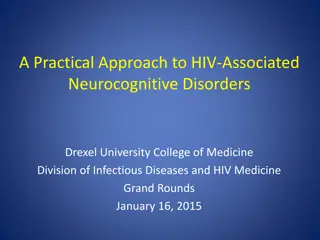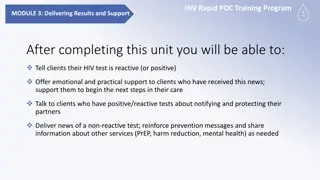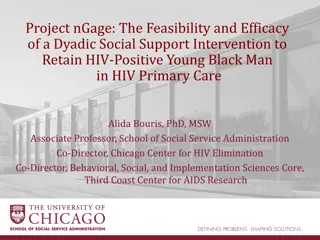Community Engagement Tracking Tool for HIV Care Advocacy
Empowering communities affected by HIV, the Community Engagement Tracking Tool facilitates meaningful engagement in decision-making for access to quality care. Developed by the Community Advocacy Network, it enhances collaboration between policymakers, program implementers, and communities to improve HIV coverage, quality, and impact. The tool enables data collection and analysis by members of the network across various countries, supplementing existing dashboards and promoting community involvement at policy, program, and community levels.
Download Presentation

Please find below an Image/Link to download the presentation.
The content on the website is provided AS IS for your information and personal use only. It may not be sold, licensed, or shared on other websites without obtaining consent from the author.If you encounter any issues during the download, it is possible that the publisher has removed the file from their server.
You are allowed to download the files provided on this website for personal or commercial use, subject to the condition that they are used lawfully. All files are the property of their respective owners.
The content on the website is provided AS IS for your information and personal use only. It may not be sold, licensed, or shared on other websites without obtaining consent from the author.
E N D
Presentation Transcript
Community Engagement Tracking Tool ITPC & Community Advocacy Network HIV Coverage, Quality, and Impact Network
Community engagement a structured, supported, meaningful and accountable process that ensures that people living with HIV have a SEAT and a VOICE in decision-making, planning, implementation, monitoring and evaluation, in order to achieve access to quality HIV care for all.
For communities, by communities The community engagement tracking tool was developed by the ROC community of practice of ICAP CQUIN network, now the Community Advocacy Network (CAN) The data collection is to be carried out by members of the CAN in their respective countries This comes as a supplement to the ICAP CQUIN dashboard, completed by ministries, program implementers and communities
POLICY LEVEL (6) PROGRAMMES LEVEL (7) COMMUNITY LEVEL (6) 1. % of TWG on DSD where RoC participated % of policy validation exercises where RoC participated % of online DSD platforms that include RoC, policy makers, program implementers and health providers 1. % of meetings focused on DSD program design where RoC participated 2. % of DSD planning meetings where RoC provided recommendations on prioritization of DSD models 1. # of community-level platforms established aimed at gathering RoC views on DSD models % of thematic working groups where RoC participated 2. DESIGN 2. 3. 1. # of communication materials produced by RoC to educate communities about policies, results of evaluations/assessments 1. % of DSD HF trainings that include RoC as planners and facilitators 2. % of DSD supportive supervision visits that include RoC leaders 1. % of DSD sensitization/demand creation activities led by or actively involving RoC % of HF with DSD where RoC work as service providers # of trainings organized for peer educators and RoC IMPLEMENTATION 2. 3. 1. % of M&E meetings that include RoC % of impact assessment exercises where RoC participated 1. % of DSD M&E tools development meetings where RoC participated 2. % of DSD M&E activities where RoC participated 3. % of self assessments where RoC participated and led on community engagement domain 1. % of DSD facilities where community score cards and/or client satisfaction surveys are implemented MONITORING & EVALUATION 2.
SCORING LEVELS & DEFINITIONS COLOUR SCORE COMMUNITY ENGAGEMENT SCORING DESCRIPTIONS (DSD Dashboard 3.0) Representatives from the community of people living with HIV (PLHIV) and civil society organizations (CSO) are not involved in any activities related to DSD and there are currently no plans to engage these groups* PLHIV and CSO are not currently engaged in DSD activities, but engagement is planned or meetings and discussions are ongoing PLHIV and CSO are meaningfully engaged in DSD implementation PLHIV and CSO are meaningfully engaged in implementation and evaluation of DSDM PLHIV and CSO are meaningfully engaged in implementation and evaluation of DSD, as well as oversight of DSD policy (e.g., through inclusion in DSD task force or other group) * use this color score if activity not developed / planned and therefore no CE or plans to engage communities % DEFINITION If % is between 0-20% If % is between 21-40% If % is between 41-60% If % is between 61-80% If % is between 81-100% SCORE POINTS 0 1 2 3 4
HOW TO ENGAGE INDICATOR INDICATOR DESCRIPTION NUMERATOR DENOMINATOR % RESULT CONFIRMED DATA SOURCES / EVIDENCE Snapshot of the tracking tool EXAMPLES OF DATA SOURCES / EVIDENCE # of TWG mtgs on DSD w/RoC participation # of TWG mtgs organized by MOH where DSD discussed PL.D1. Consult with RoC leadership to facilitate information- sharing re: DSD models described in DSD policy documents % of TWG on DSD where RoC participated To determine the %, take # of TWG meetings where RoC participated divided by the # of TWG organized by the government where DSD was discussed #DIV/0! National program listserv for TWG meeting invitations National DSD TWG meeting reports PL.D2. Include RoC/community members in policy and guidelines formulation task teams and TWGs National policy frameworks/g uidelines documents with list of contibutors/pa rticipants
Tool pilot results INDICATOR % of TWG on DSD where RoC participated % of policy validation exercises where RoC participated % of online DSD platforms that include RoC, policy makers, program implementers and health providers # of communication materials produced by RoC to educate communities about policies, results of evaluations/assessments PL.ME1i. % of M&E meetings that include RoC PL.ME2i. % of impact assessment exercises where RoC participated PR.D1i. % of meetings focused on DSD program design where RoC participated PRL.D2i. % of DSD planning meetings where RoC provided recommendations on prioritization of DSD models PRL.I1i. % of DSD HF trainings that include RoC as planners and facilitators PRL.I2i. % of DSD supportive supervision visits that include RoC leaders PRL.ME1i. % of DSD M&E tools development meetings where RoC participated PRL.ME2i. % of DSD M&E activities where RoC participated PRL.ME3i. % of self assessments where RoC participated and led on community engagement domain CL.D1i. # of community-level platforms established aimed at gathering RoC views on DSD models CL.D2i. % of thematic working groups where RoC participated CL.I1i. % of DSD sensitization/demand creation activities led by or actively involving RoC CL.I2i. % of HF with DSD where RoC work as service providers CL.I3i. # of trainings organized for peer educators and RoC CL.ME1i. % of DSD facilities where community score cards and/or client satisfaction surveys are implemented COUNTRY A COUNTRY B # PL.D1i. PL.D2i. PL.D3i. PL.I1i.



